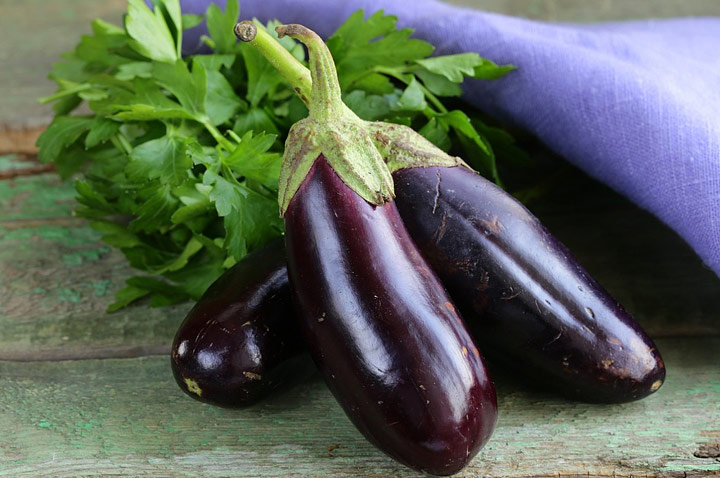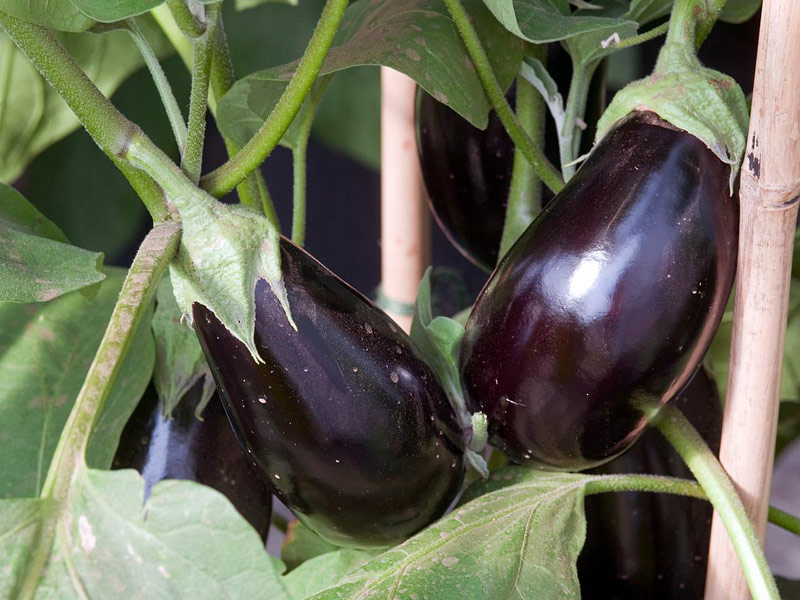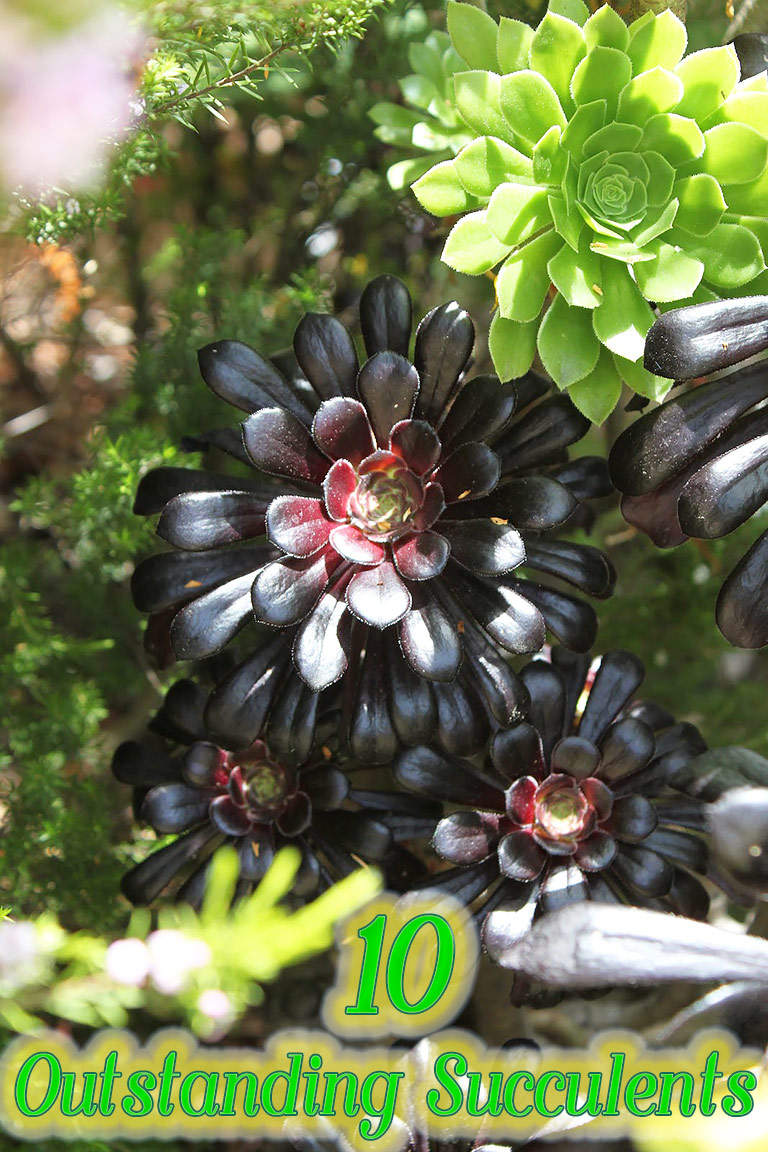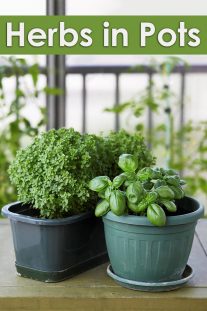
The eggplants, were considered poisonous for many years. Eggplant is a member of the Solanaceae family that includes a number of toxic weeds like Deadly Nightshade. Eventually the adventurous began to try eating eggplant and it even earned a reputation as an aphrodisiac. But, it’s only been in the last 100 years that eggplant has been widely accepted as a vegetable. The large-fruited varieties probably originated in India while the smaller eggplants are thought to have come from China.
Eggplants Growing

Eggplants can be started from seed indoors 10 to 12 weeks before their ideal planting out date. However, nice healthy transplants might be a better way to go unless a very large harvest is desired. In northern gardens where the growing season is short, it is important to use early-ripening eggplant varieties and start with large transplants. Get the eggplants off to a fast start by protecting them with “Wall O’ Water” plant protectors to shelter the tender plants from cold, dry northern winds that are prevalent in the early spring and into the summer.
Wait until night temperatures are consistently in the 60’s before setting out eggplant transplants. Even though the plants can recover from a few cold nights, they may become stunted or susceptible to disease organisms.

Be sure to provide good drainage and a rich organic soil, and be sure to give eggplants plenty of space-most varieties will need 18 to 24 inches between plants and two to three feet between rows. Black plastic mulch can help eggplants get off to a fast start in the spring when temperatures are marginal. Cover the plastic with light-colored straw mulch to reduce the build up of heat in the summer.
Don’t be afraid to fertilize-eggplants are heavy feeders. And water eggplants thoroughly during dry spells. If you watch out for spider mites and harvest the fruits while the skins are still glossy, you will soon be considered the neighborhood eggplant expert.
Cultivation
Start by working lots of compost into the soil, plus 2 to 3 pounds of a complete fertilizer like 15-5-10 per 100 sq. ft. If you prefer, use an organic fertilizer like blood meal, well-rotted manure, cottonseed meal or bat guano.
Once the weather has warmed up enough or measures suggested to improve soil warmth have been applied, set transplants 18 to 24 inches feet apart in a row with rows similarly spaced. ‘Blue Marble Hybrid’ and ‘Millionaire Hybrid’ are best for container gardening or for closer spacing. If you use one of the dark-colored mulches, it’s best to cover it later in the summer with light-colored hay to reflect the sun’s heat. Old newspapers also make great mulch. Soak them in water just before laying them out- 8 to 10 sheets thick – and cover with hay, or dry grass clippings to hide the paper and keep it from blowing away. If you fertilize eggplants monthly use about one pound per 100 ft. of row. You can be fairly cavalier about sprinkling fertilizer down the row because the newspapers will act as a buffer. The paper will break down and can be dug into the garden at the end of the season.
Eggplant Growing Tips

Traditional eggplant varieties have a reputation for developing a bitter flavor when grown under stressful conditions. Make sure your eggplants get lots of water and fertilizer to insure rapid growth and fruit maturity. Fortunately modern hybrid varieties are not likely to exhibit bitterness in spite of the weather. However, they will respond to good cultural practices with bushels of delicious fruit.
Insects & Diseases
Flea beetles and spider mites love eggplants even more than gardeners do. It is not always easy to catch flea beetles on eggplants. They’re quite mobile, but you will see evidence of their damage – shot holes throughout the leaves.
Insecticidal sprays will often be necessary although botanicals like rotenone usually get the job done. Spider mites don’t chew holes in the leaves, but they suck the juices out of the plant leaving lots of small, dead specks in the leaves. They can become so numerous that the leaves begin to take on a grayish appearance and you may even see webs.
Eventually the leaves turn yellow and fall off. If you catch them before they become too numerous, high-pressure water sprays will often knock the population down enough for predators to finish them off. Otherwise spray the plants with wettable sulfur being sure to cover the underside of the leaves as well as the top.
Eggplant Harvest Tips
The primary criteria for harvesting eggplants is to pick them while the skins are glossy. If the eggplants skin becomes dull, the seeds are beginning to mature and the potential for bitterness is increased.




Leave a Reply